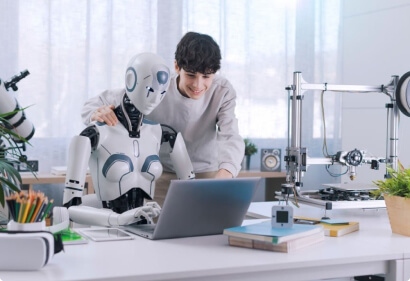Service Robots
Service robots are designed to assist humans in non-industrial environments, including healthcare, hospitality, customer service, and household automation. These AI-driven robots interact with people and perform tasks that improve convenience, efficiency, and accessibility.
One of the most prominent applications of service robots is in healthcare, where robotic assistants help doctors with surgeries, monitor patients, and deliver medication in hospitals. AI-powered robotic nurses provide real-time health monitoring, reducing the workload of medical staff.
In hospitality and retail, robots are used for customer service, delivering food, guiding visitors, and handling check-in/check-out procedures in hotels and airports. AI chatbots integrated with robotic systems also enhance customer experience by providing instant assistance.
Domestic service robots, such as robot vacuum cleaners and AI-powered personal assistants, have become increasingly common in households. These robots use machine learning and sensor-based navigation to clean floors, recognize objects, and respond to voice commands.
Interactive Chart: Market Share of Service Robots by Industry (2023)
The interactive chart below highlights the distribution of service robots across different industries, showcasing their impact on healthcare, hospitality, and home automation.

